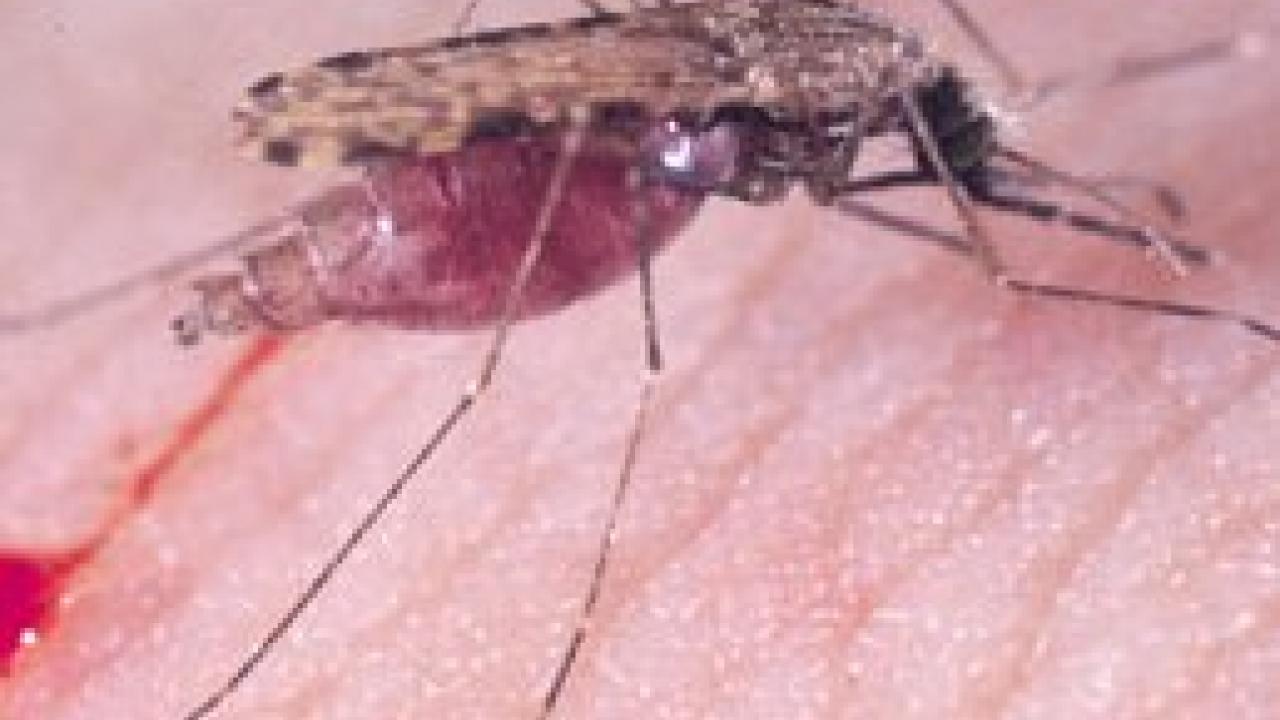
Malaria mosquito groups do mix and match
Assumptions about genetics of two malaria mosquito subgroups are false.
Malaria mosquito groups surprisingly do mix and match, new study finds
A new study by researchers at the University of California, Davis, and in Mali finds that many of the assumptions underlying current thinking about the genetics of two key subgroups of malaria mosquitoes are false.
For the past decade, scientists around the world have intensely studied the two forms of the African malaria mosquito, Anopheles gambiae. It was thought that the mosquitoes in the two subgroups -- known as the M and S forms -- rarely mated outside of their groups, and, just this year, the two were recognized as distinct species.
The new study shows, however, that although the M and S subgroups have developed distinct genetic profiles, there actually continues to be significant exchange of genes between the two groups due to crossbreeding. These findings appeared online in the Nov. 19 Early Edition of the Proceedings of the National Academy of Sciences.
Developing an accurate picture of gene flow through matings within and between these two mosquito groups could prove key to preventing the spread of malaria. The deadly mosquito-transmitted disease annually kills more than 660,000 people around the world, mostly in Africa.
In this study, lead authors Gregory Lanzaro and Yoosook Lee, both medical entomologists in the UC Davis School of Veterinary Medicine, and their colleagues showed that hybridization, or mating, between the M and S groups was far higher than previously assumed.
“It is critical that we understand the movement of genes between these two forms of the African malaria mosquito,” Lanzaro said.
He and Lee noted that researchers need to know whether genes for traits like insecticide resistance are shared between the two malaria mosquito subgroups. This information also is important because some of the techniques that appear to be most promising for controlling malaria involve the movement of genes from genetically modified mosquitoes into natural mosquito populations.
The researchers added that the findings also are significant for evolutionary biologists, confirming that the malaria mosquito is a good model for studying gene flow between groups, as well as how species evolve.
The new results show that the frequency of hybrid, or crossbred, individuals in a population ranges from 5 percent to 97 percent, compared to the earlier estimates of less than one percent. Although the M and S hybrids generated in the laboratory are normal in every sense, the new study demonstrates that this is not true in nature, where hybrids are common but less fit than other mosquitoes.
The study included data gathered during 21 years from a single village in Mali. The data, representing approximately 250 mosquito generations, revealed that mating behaviors were temporarily unstable. For example, in one year, the rate of crossbreeding between the two groups jumped from the usual zero percent to 12 percent.
Analysis of the distribution of M and S genetic variations at three regions of the genome demonstrated that strong genetic selection prevented transfer of two of the three regions from one group to the other. However, one region of the genome successfully crossed the reproductive barrier from the S subgroup into the M subgroup. This region presumably contained a gene or genes beneficial to the M form mosquitoes.
Collaborating with Lanzaro and Lee on this study were Clare D. Marsden, Laura C. Norris, Travis C. Collier, Bradley Main and Anthony J. Cornel, all of the UC Davis Vector Genetics Laboratory and Abdrahamane Fofana of the Malaria Research and Training Center at the University of Bamako, Mali.
Funding for the study was provided by several grants from the National Institutes of Health.
About UC Davis
For more than 100 years, UC Davis has been one place where people are bettering humanity and our natural world while seeking solutions to some of our most pressing challenges. Located near the state capital, UC Davis has more than 33,000 students, over 2,500 faculty and more than 21,000 staff, an annual research budget of nearly $750 million, a comprehensive health system and 13 specialized research centers. The university offers interdisciplinary graduate study and more than 100 undergraduate majors in four colleges — Agricultural and Environmental Sciences, Biological Sciences, Engineering, and Letters and Science. It also houses six professional schools — Education, Law, Management, Medicine, Veterinary Medicine and the Betty Irene Moore School of Nursing.
(This article was written by Pat Bailey, UC Davis News Service, November 26, 2013.)
Media contacts:
- Gregory Lanzaro, Vector Genetics Laboratory, (530) 752-5652, gclanzaro@ucdavis.edu
- Pat Bailey, UC Davis News Service, (530) 752-9843, pjbailey@ucdavis.edu